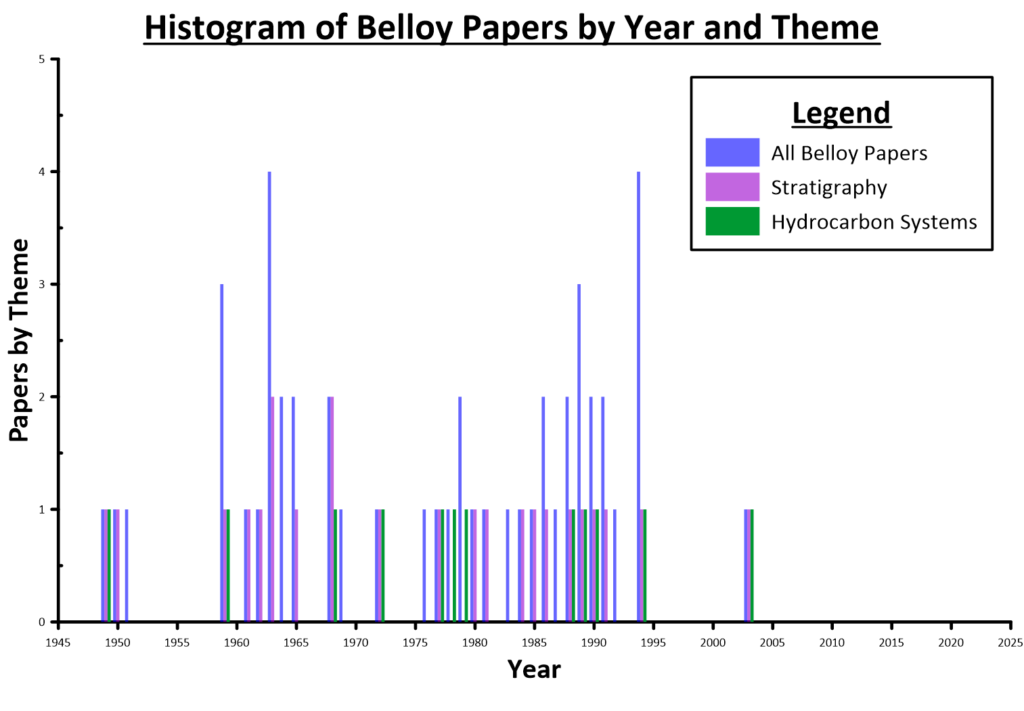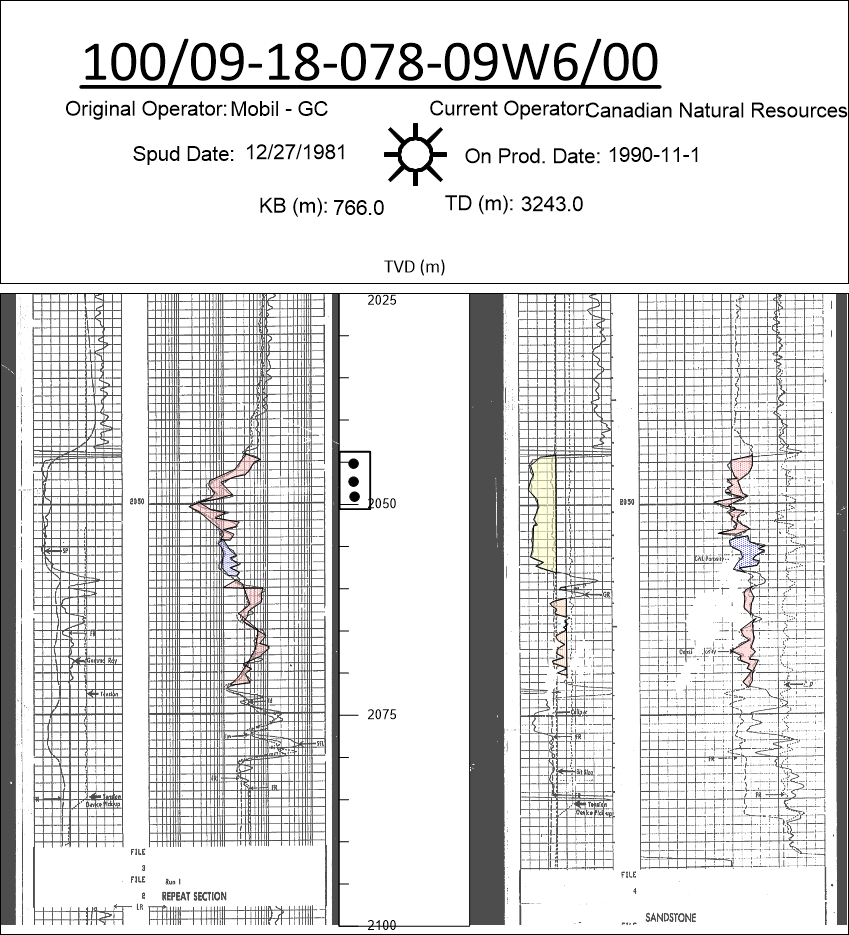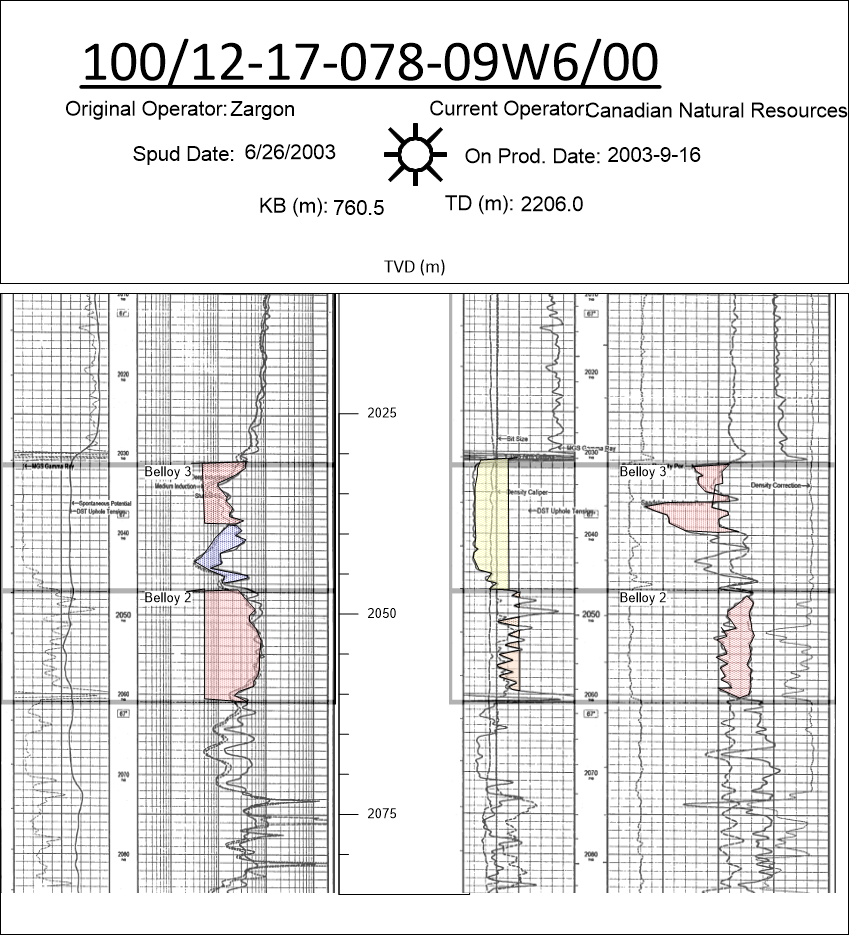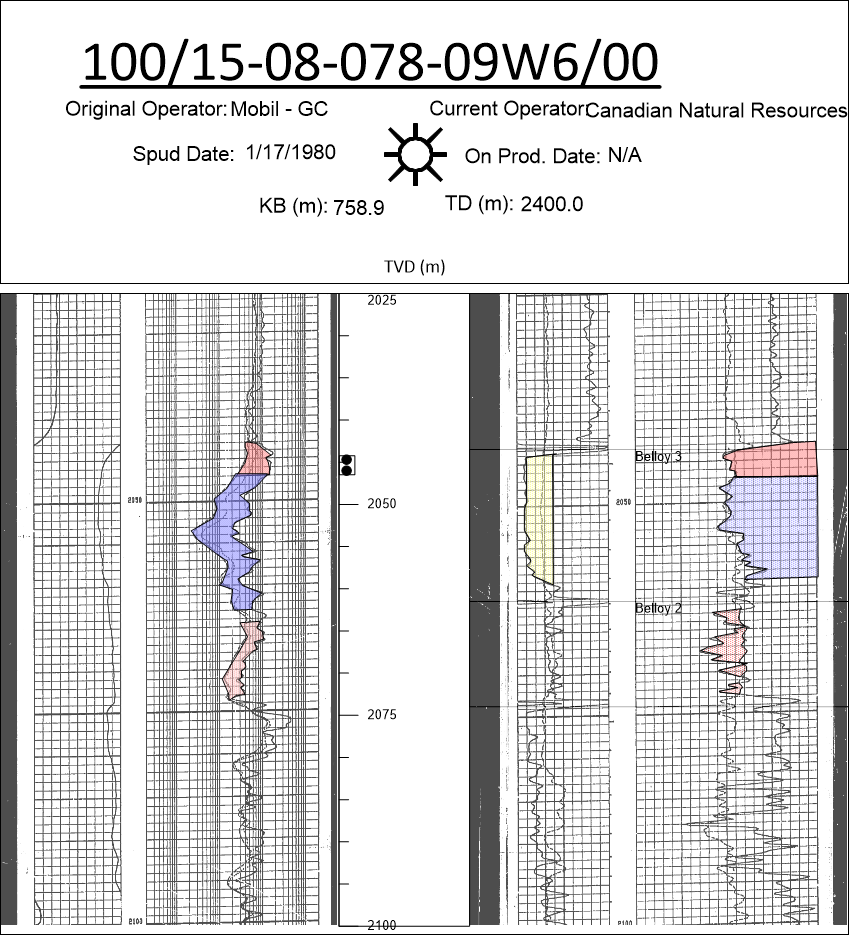Is there a formation in the WCSB less understood than the Belloy? With all of the research in the basin, why have so few papers focused on the Permian? The histogram shown below highlights papers found through a search of sources including The Atlas and The Bulletin of Canadian Energy Geoscience that included a reference to the Belloy. Since 1949 there have only been 47 in total.

Of these articles, only half discussed the Belloy in any more than peripheral terms. Only 12 delved into the sedimentology and petroleum systems of the Belloy, most notably Naqvi (1972), a Ph. D. thesis (Dunn, 2003) and a field trip guide (Dunn and Henderson, 2003). It has been almost two decades since the last major effort. Consider the advances in the understanding of other formations over that time. This lack of interest is particularly odd when you consider the number of Belloy wells that have produced over a million barrels of oil or over 10 bcf of gas.
Rocks with really good production that no one pays attention to? If one were to anthropomorphize rocks (and don’t all geologists do so?), you could understand the Belloy taking umbrage for us ignoring its achievements. To try and make it up to the Permian, I won’t focus on a 13 bcf Belloy gas well but rather on an offset drilled to tap into some attic gas potential and a third well off the structure. But to channel a salesman in the Big 4 during the Stampede: “Wait! There’s more!”
The really interesting part isn’t the productive zone, it is the underlying sequence and the by-passed pay it represents. The original well (100/09-18-078-09W6/00) experienced drilling problems soon after penetrating the Belloy (the geomechanical implications of the Belloy alone warrant more research).
These events and accessory minerals, such as pyrite, complicate the log analysis. It was apparent that there were two gas reservoirs present, but only the upper one was completed. After this well watered out, 100/12-17-078-09W6/00 was drilled to access unexploited gas reserves. While this well increased the cumulative gas production from the pool to over 16 bcf, the lower zone remained unexploited notwithstanding the siltier but much clearer pay section.

Initial Belloy discovery well illustrating variable pay signatures. Created with data courtesy of Petro Ninja.

Attic Belloy gas well illustrating pay signatures unaffected by invasion effects. Created with data courtesy of Petro Ninja.

Off-structure well displaying possible extent of underlying Belloy pay. Created with data courtesy of Petro Ninja.
So a “low hanging” thick untapped gas pool appears to be present. And how extensive is this resource? The final well we will look at, 100/15-08-078-09W6/00, also displays a similar, subtle gas pay response.
How far does this pay section extend? I’m not divulging here, but does this example not serve as a good reason to provide the Belloy some research love?
References
Dunn, Lindsay A., 2003. Sequence biostratigraphy and depositional modeling of the Pennsylvanian to Permian Belloy formation northwest Alberta and northeast British Columbia, https://prism.ucalgary.ca/handle/1880/42345, doi: 10.11575/PRISM/10182
Dunn, Lindsay & Henderson, Charles, 2001. Sequence Biostratigraphy and Depositional Modelling of the Pennsylvanian-Permian Belloy Formation Peace River Embayment, Alberta Canada.
Naqvi, I.H., 1972. The Belloy Formation (Permian), Peace River area, northern Alberta and northeastern British Columbia. Bulletin of Canadian Petroleum Geology, v. 20, p. 58-88.